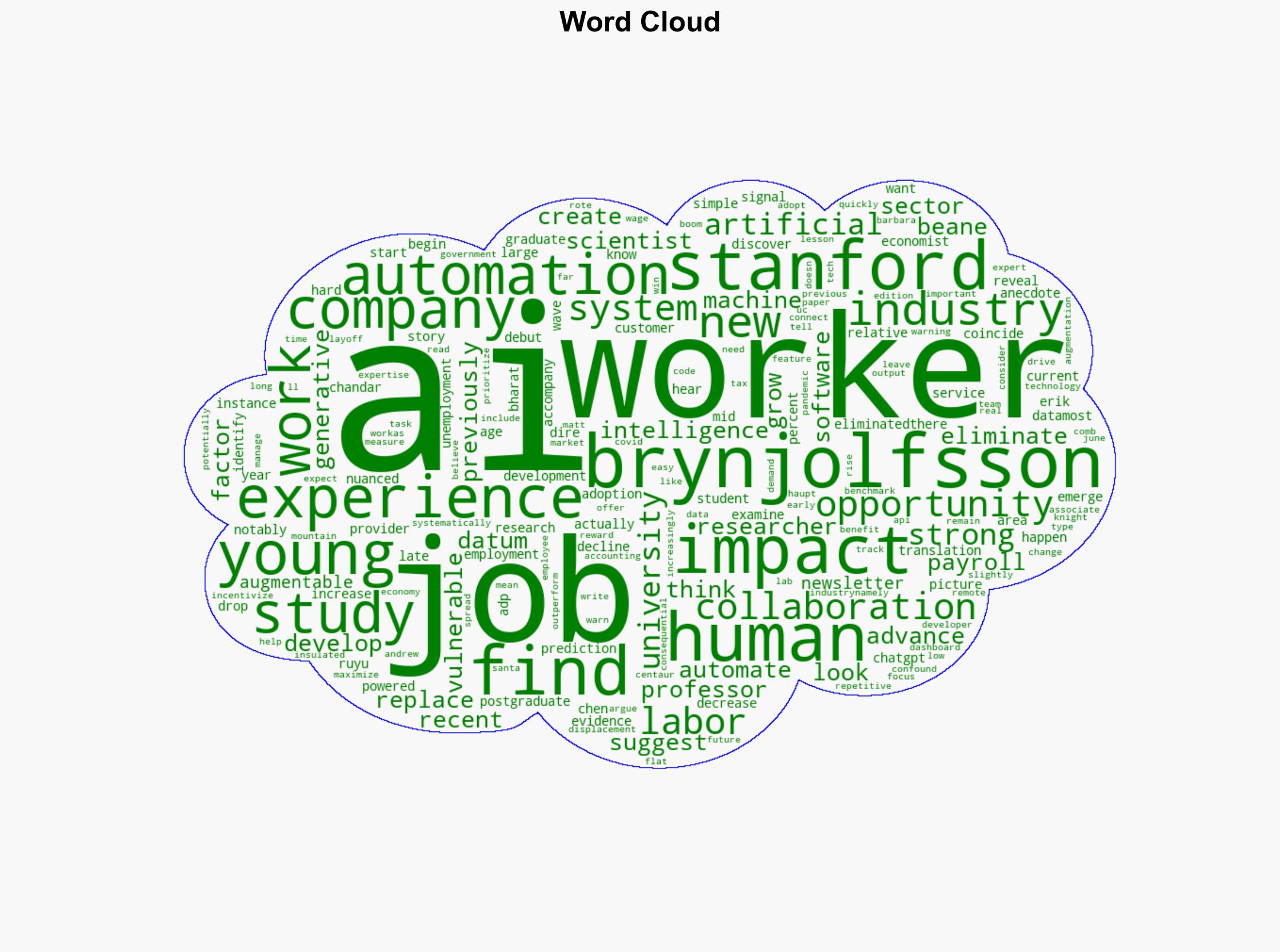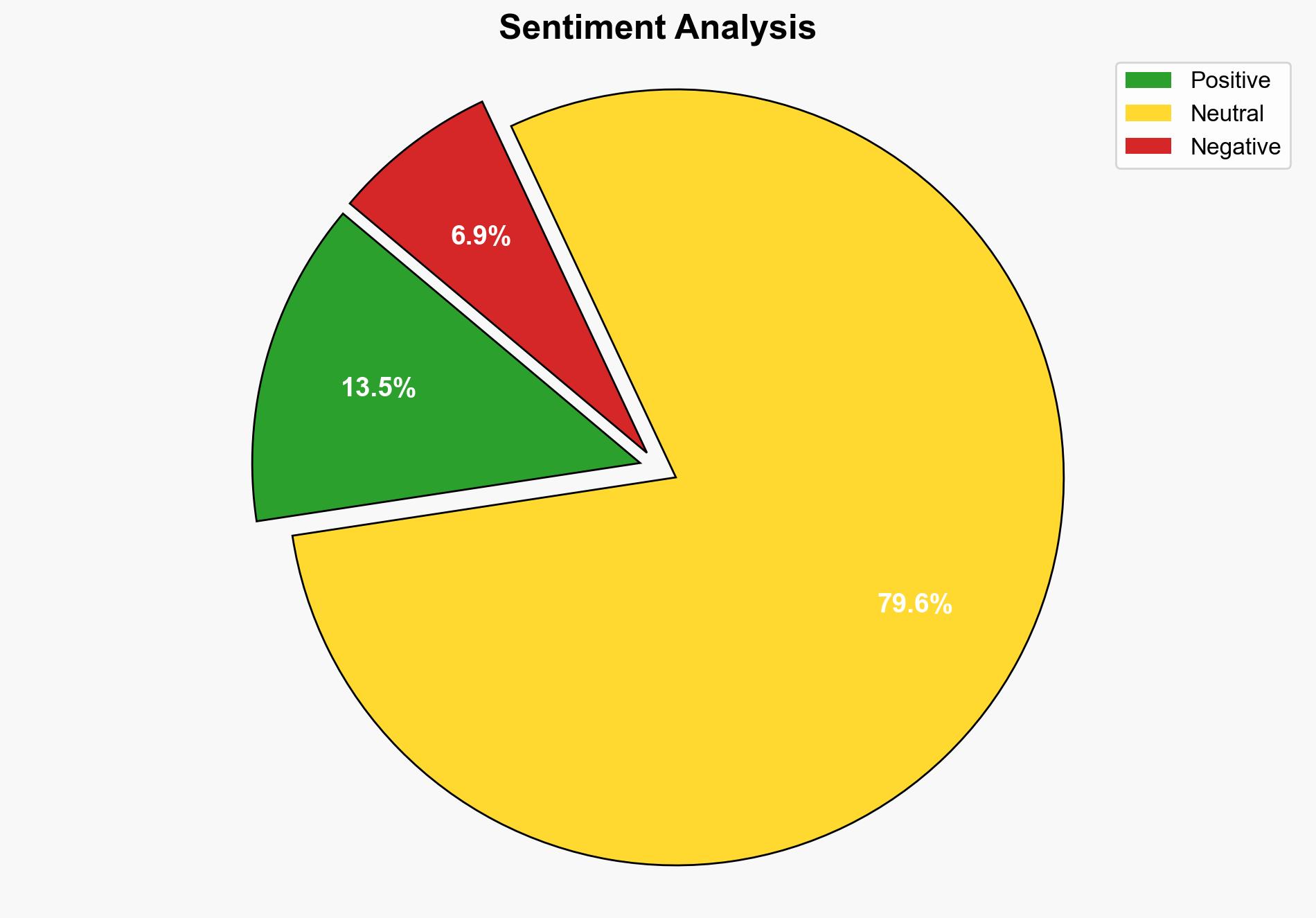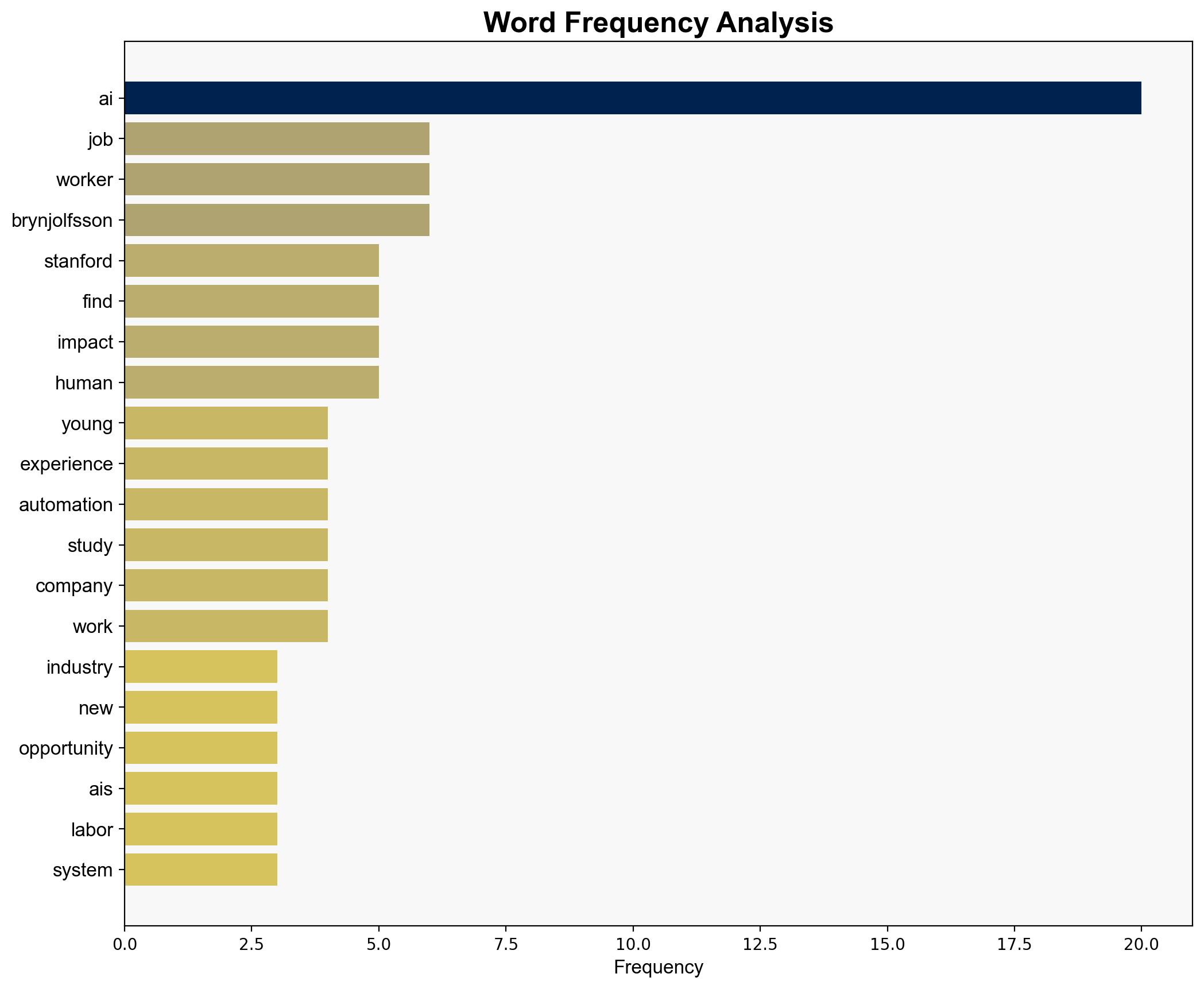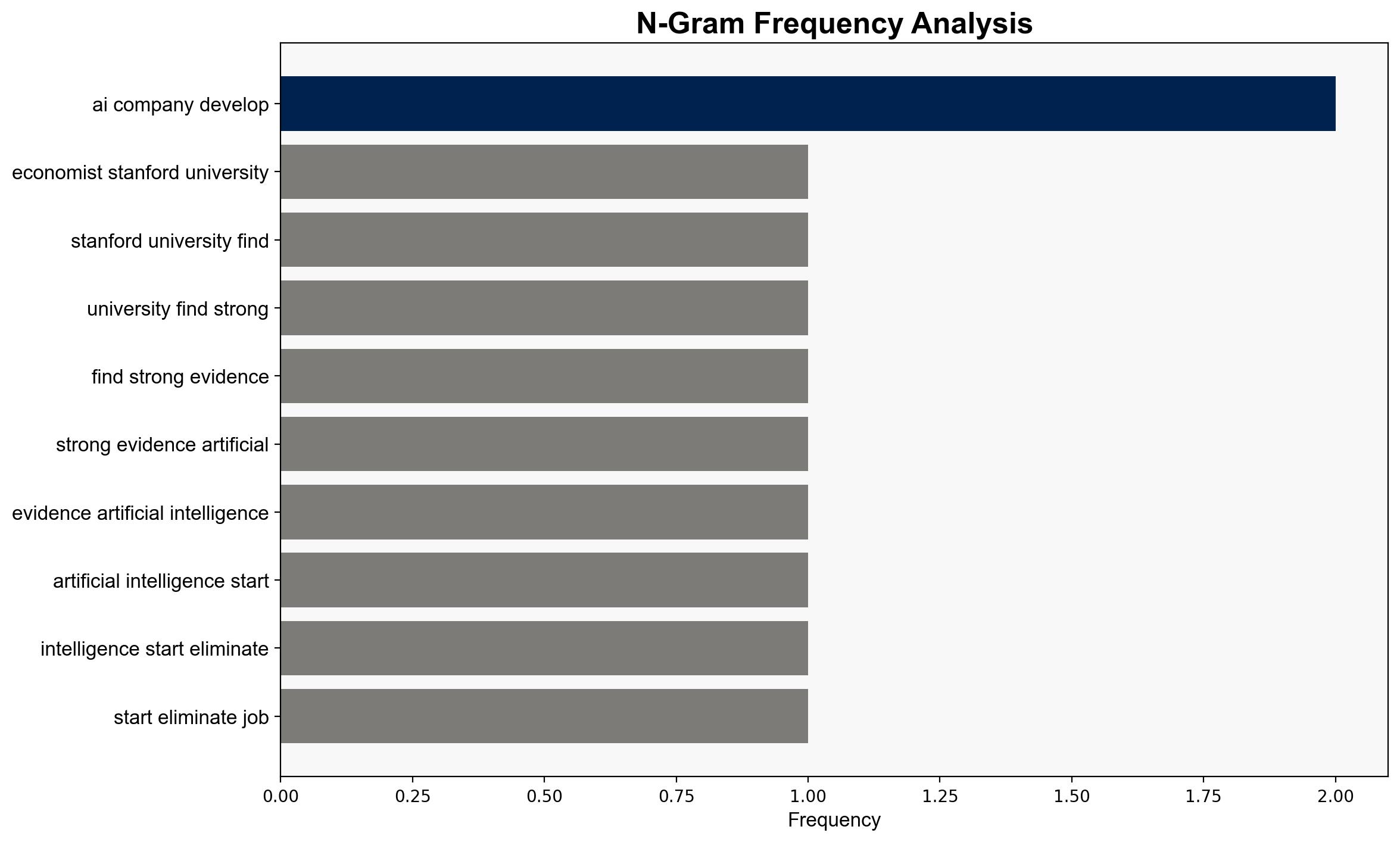AI Is Eliminating Jobs for Younger Workers – Wired
Published on: 2025-08-26
Intelligence Report: AI Is Eliminating Jobs for Younger Workers – Wired
1. BLUF (Bottom Line Up Front)
AI’s impact on employment is nuanced, with evidence suggesting both job displacement for younger workers and opportunities for experienced workers. The most supported hypothesis is that AI is reshaping job markets, creating a dual effect of displacement and opportunity. Confidence level: Moderate. Recommended action: Develop policies to enhance workforce adaptability and foster AI-human collaboration.
2. Competing Hypotheses
1. **AI is primarily displacing younger workers**: The adoption of AI technologies, particularly generative AI, is leading to a decline in job opportunities for younger workers in sectors vulnerable to automation, such as customer service and software development.
2. **AI is creating new opportunities alongside displacement**: While AI displaces some jobs, it also generates new roles, particularly for experienced workers, by augmenting tasks and creating demand for AI management and collaboration skills.
Using ACH 2.0, the second hypothesis is better supported due to evidence of job growth in certain areas and the emergence of new roles requiring human-AI collaboration.
3. Key Assumptions and Red Flags
– **Assumptions**: The analysis assumes that AI’s impact is uniform across sectors and that current data accurately reflects long-term trends. It also presumes that AI adoption rates are consistent across industries.
– **Red Flags**: Lack of comprehensive data on unemployment rates among young graduates and potential confounding factors such as the COVID-19 pandemic and tech sector layoffs.
– **Blind Spots**: The potential for AI to create entirely new industries or job categories is not fully explored.
4. Implications and Strategic Risks
AI’s dual impact on the labor market could lead to increased economic inequality and social unrest if not managed properly. The displacement of younger workers may result in a skills gap and long-term unemployment issues. Conversely, failure to capitalize on AI’s potential for creating new roles could stifle economic growth. Geopolitically, nations that effectively integrate AI into their economies could gain competitive advantages.
5. Recommendations and Outlook
- Implement workforce retraining programs focused on AI-related skills to mitigate displacement risks.
- Encourage AI-human collaboration through policy incentives and industry standards.
- Scenario Projections:
- Best Case: Successful integration of AI leads to economic growth and job creation.
- Worst Case: Widespread job displacement results in economic instability and social unrest.
- Most Likely: A mixed outcome with both displacement and new opportunities, requiring adaptive strategies.
6. Key Individuals and Entities
– Erik Brynjolfsson
– Ruyu Chen
– Bharat Chandar
– Andrew Haupt
– Matt Beane
7. Thematic Tags
economic impact, AI and automation, workforce development, technology policy





